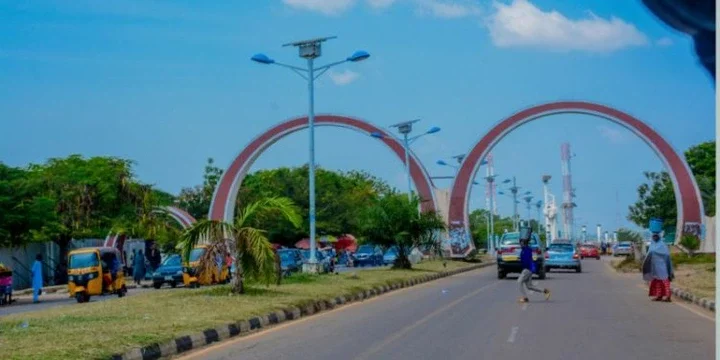
Did you know that Nigeria has a total of 36 states that vary significantly in size? As you explore this diverse country, you'll find massive states that could swallow some European countries whole and tiny states you could drive across in an hour. If you're planning an epic road trip adventure and want to experience the true grandeur of Nigeria's landscape, you need to visit the largest states.
In this article, we will go through 10 of the biggest states in Nigeria by Landmass, and we will give a brief overview of each state's history and characteristics. Get ready to be wowed by the top 10 largest states in Nigeria.
What is Landmass?
Landmass refers to the total surface area of a geographical region or country. It is measured in square kilometres or miles. Nigeria has a total landmass of 923,768 square kilometres, making it the 32nd largest country in the world by area.
The biggest state in Nigeria by land area is Niger State, with a total landmass of 76,363 square kilometres. This accounts for about 8.27% of Nigeria's total land area. Niger State is located in the north-central part of Nigeria.
What Makes a State the Biggest in Nigeria?
To be the biggest state in Nigeria, there are a few factors to consider:
Landmass: The total area of land within the state's borders. The larger the landmass, the more likely it is to be one of the biggest states.
Population: A large population means more communities, towns and cities within the state. The higher the population density, the bigger the state.
Economy: A strong, diversified economy with many industries and job opportunities attracts more people to live in the state, contributing to its size and influence.
Infrastructure: Extensive infrastructure like roads, airports, seaports, schools, hospitals, etc. allows for growth and supports a large population within the state.
Tourism: Popular tourist destinations draw many visitors and also encourage migration to the state, which aids in its development and status.
Agriculture: Large-scale agriculture requires more land and resources, so states with greater agricultural output and exports tend to be quite sizable.
Natural resources: The availability of natural resources like crude oil, natural gas, minerals, forests, etc., boosts the economy and funds development in the state.
So you see, to be the biggest, a state needs the space, the people, the economy, infrastructure, destinations, output, and resources to support its immense scale. With all these elements, we are only focusing on one of these factors in this article, and that is the biggest state in Nigeria by land area.
Top 10 Largest States in Nigeria by Land Mass
When ranking the largest states in Nigeria, you'll find a diverse range in size and geography. The biggest states dominate the northern region, with harsh terrain and a hot climate. Some of the smallest states are located along the coast in the south, with tropical rainforests and mangroves.
These 10 largest states in Nigeria account for about 67% of the total land area of Nigeria. The southern states are typically smaller in size compared to the northern states.
Here are the top 10 biggest states in Nigeria by landmass:
Niger State - 76,363 Square kilometres
Niger State is the largest state in Nigeria by land area. It was established on February 3, 1976; it has a landmass of 76,363 square kilometres. The State has a population of about 27,634,692 people, and its capital city is Minna.
The state was formed in 1976 when the then North-Western State was bifurcated into Niger State and Sokoto State. Niger State contains two main vegetation zones, namely the savannah and the forest, with the majority of the state in the savannah zone. The state has 25 local government areas including Agaie, Agwara, Bida, Borgu, Bosso, Chanchaga, Edati, Gbako, Gurara, Katcha, Kontagora, Lapai, Lavun, Magama, Mariga, Mashegu, Mokwa, Munya, Paikoro, Rafi, Rijau, Shiroro, Suleja, Tafa, and Wushishi Local Government Areas.
The major ethnic groups are Nupe, Gwari, Hausa, Kambari, Dukawa, Bussa and Zuru. The state has two distinct seasons, the dry and rainy seasons. The dry season lasts from November to March, while the rainy season starts in April and ends in October. The state has notable tourist attractions like the Gurara Waterfalls, Zuma Rock, Kainji National Park and Borgu Game Reserve.
Borno State - 70,898 Square kilometres
Borno State was created on February 3, 1976. It borders Chad, Cameroon, and Niger. The state capital is Maiduguri. Borno State covers 70,898 square kilometres and has 27 Local Government Areas, which are Abadam, Askira-Uba, Bama, Bayo, Biu, Chibok, Damboa, Dikwa, Gubio Guzamala Gwoza Hawul, Jere, Kaga, Kala/Balge, Kondunga, Kukawa, Kwaya, Kusar, Mafa, Magumeri, Maiduguri, Marte, Mobbar, Monguno, Ngala, Nganzai, and Shani.
The major ethnic groups are Kanuri, Shuwa, Bura, Marghi, and Babur. The Kanuri people dominate the state. Borno State has a population of about 4.2 million, according to the 2006 census. The major languages are Kanuri, Shuwa, Bura, Marghi, and Hausa. The major religions are Islam and Christianity.
Borno State has a long history, with the Kanem-Bornu Empire, which lasted for over 1,000 years. The Shehu of Borno still retains some ceremonial powers. The major economic activities are fishing along Lake Chad, farming, and cattle rearing.
Taraba State - 54,473 Square kilometres
Taraba State was created on August 27, 1991, by the General Babangida administration. The name was derived from the River Taraba, which traverses the southern part of the state. Jalingo is the capital of Taraba State. The state has 16 Local Government Areas, which are Ardo Kola, Bali, Donga, Gashaka, Gassol, Ibi, Jalingo, Karim Lamido, Kurmi, Lau, Sardauna, Takum, Ussa, Wukari, Yorro, and Zing.
Some of the major ethnic groups in Taraba State are Mumuye, Mambilla, Chamba, Jukun, Tiv, Wurkun, Ichen, Fulani, Jenjo, and Kalabari. There are 77 distinct ethnic groups and their languages in Taraba State. The state has a population of over 2.3 million residents, based on the 2006 Census.
Taraba State is bounded in the west by Nasarawa State and Benue State (for 109 km), northwest by Plateau State for 202 km (126 miles), north by Bauchi State for 54 km and Gombe State for 58 km, northeast by Adamawa State for about 366 km and south by Northwest Region in Cameroon for about 525 km. The landscape consists of mountainous terrain, hills and valleys. The climate in the state favours the cultivation of cash crops like coffee, tea, groundnuts and cotton.
The major tourist attractions in the Taraba State are Gashaka Gumti National Park, Mambilla Plateau, and Chappal Waddi Mountain.
Kaduna State - 46,053 Square kilometres
Kaduna State was created on May 27, 1967. It has a land area of 46,053 square kilometres with an estimated population of over 6 million people. The state derives its name from the crocodiles in Kaduna River, and it is popularly known as the "Crocodile State".
Kaduna City is the state capital and main commercial centre. The state has 23 local government areas, including Birnin Gwari, Chikun, Giwa, Igabi, Ikara, Jaba, Jema'a, Kachia, Kaduna North, Kaduna South, Kagarko, Kajuru, Kaura, Kauru, Kubau, Kudan, Lere, Makarfi, Sabon Gari, Sanga, Soba, Zangon Kataf, Zaria. The Major ethnic groups in Kaduna State are the Hausa, Gbagyi, Adara, Ham, Atyap, Bajjuu and Agworok ethnics.
Kaduna is bordered by Zamfara State, Katsina State, and Kano State to the north; Bauchi State and Plateau State to the east; Nasarawa State to the south; and Niger State to the west.
The major tourist attractions in Kaduna are Kajuru Castle, Sultan Bello Masjid, Fifth Chukker Polo and Resort, Nok Village, Kajuru Castle, and Kamuku National Park.
Bauchi State - 45,893 Square kilometres
Bauchi State was created on February 3, 1976, from the North Eastern State. The State Capital is Bauchi, and it has 20 Local Government Areas, namely: Alkaleri, Bauchi, Bogoro, Dambam, Darazo, Dass Gamawa, Ganjuwa, Giade, Itas/Gadau, Jama'are, Katagum, Krifi, Miau, Ningi, Shira, Tafawa Balewa, Toro, Warji and Zaki. Bauchi State has a population of over 4.6 million; it is the 5th largest state in Nigeria by land area, covering 45,893 square kilometres.
Some of the major ethnic groups are Hausa, Fulani, Gerawa, Jarawa, Tangale, Waja, Bauchi, and Sayawa. The state has fertile land, and the economy depends on agriculture, producing crops like cotton, groundnuts, maize, rice, millet, guinea corn, beans, and cassava. Bauchi also has mineral resources like limestone, gypsum, kaolin, granite, and tourmaline.
The climate has wet and dry seasons, with average temperatures around 86°F. Popular places to visit include the Yankari National Park, Wikki Warm Springs, and Bauchi Emir's Palace. Some of the higher learning institutions in Bauchi State include Bauchi State University, Abubakar Tafawa Balewa University, and Federal Polytechnic Bauchi.
Yobe State - 45,502 Square kilometers
Yobe State was created on August 27, 1991. The state was carved out from Borno State. The capital of Yobe State is Damaturu. Yobe State is located in the North-Eastern geopolitical zone of Nigeria. It shares borders with Borno State, Gombe State, Bauchi State, and Jigawa State.
The state has 17 Local Government Areas: Bursari, Damaturu, Fika, Fune, Geidam, Gujba, Gulani, Jakusko, Karasuwa, Machina, Nangere, Nguru Potiskum, Tarmuwa, Yunusari, Yusufari, Bade and Jogana. The major ethnic groups are Kanuri, Hausa, Fulani, and Buduma. The major religions are Islam and Christianity.
Yobe State has a population of over 3 million people, according to the 2006 census. The state is predominantly agricultural, with livestock rearing and farming as the major occupation. The state is blessed with agricultural products like guinea corn, millet, cowpea, groundnut, cotton, etc. Mineral resources include limestone, gypsum, kaolin, and quartz.
Some notable landmarks in the state are Lake Nguru and Gashua Emir's Palace. The state has two universities: Federal University Gashua and Yobe State University.
Zamfara State - 39,762 Square kilometers
Zamfara State was created on October 1, 1996, with its capital at Gusau. It was carved out of Sokoto State and comprised 14 Local Government Areas, namely Zurmi, Maradun, Talata Mafara, Gusau, Kaura Namoda, Bungudu, Chafe, Maru, Anka, Bukkuyum, Gummi, Bakura, Birin Magaji/Kiyaw and Shinkafi. According to the 2006 census, Zamfara State has a population of over 3 million people.
The state has a landmass of 39,762 square kilometres and is bordered to the north by the Republic of the Niger for 32 km (20 miles), to the south by Kaduna State for 117 km (73 miles) and Niger for 38 km (24 miles), to the east by Katsina State, and to the west by the states of Sokoto and Kebbi. The major ethnic groups are Hausa, Fulani, Kamuku, Gwari, and Zabarma, with Hausa being the dominant language.
Zamfara State has a hot tropical climate, with temperatures rising up to 42°C in the hot season. Agriculture is the main occupation of the people, and crops grown include millet, guinea corn, rice, groundnut, cotton, and beans. Mineral resources include gold, tantalite, kaolin, and iron ore.
The state also has notable landmarks like the Gusau Dam and Kuyambana Game Reserve.
Adamawa State - 36,917 Square kilometres
Adamawa is a state in northeastern Nigeria with an area of 36,917 square kilometres. Created on August 21, 1991, from part of Gongola State, Adamawa's capital and largest city is Yola. The state is comprised of 21 Local Government Areas (LGAs) with a population of over 4 million. The LGAs are Demsa, Fufore, Ganye, Girei, Gombi, Guyuk, Hong, Jada, Lamurde, Madagali, Maiha, Mayo-Belwa, Michika, Mubi North, Mubi South, Numan, Shelleng, Song, Toungo, Yola North, and Yola South.
The name "Adamawa" came from the founder of the kingdom, Modibo Adama. Adamawa is a diverse region, home to over 100 ethnic groups like Marghi, Higgi, and Fali. The major languages are Marghi, Fulfulde, and Higgi. The dry season lasts from October to March, while the rainy season is from April to September.
Adamawa has a long history of human settlement, with archaeological evidence of inhabitants dating back over 2,000 years. The Fulani Sultanate took control in the 19th century and was incorporated into Northern Nigeria in 1900. The emirate was dissolved in 1966, but the traditional ruler remains influential.
The state economy depends on farming, herding, and fishing along rivers like Benue and Gongola. Major crops are maize, sorghum, millet, groundnuts, soybeans, and cotton. Adamawa also has reserves of kaolin, limestone, and bentonite. Tourism potential remains largely untapped, with landmarks like Lamido's Palace, Yola, Mandara Mountains, and Gashaka-Gumti National Park.
Kwara State - 36,825 Square kilometres
Kwara State was created on May 27, 1967, from the former Northern and Western Regions of Nigeria. The state has its capital at Ilorin and shares borders with Niger, Kogi, Ekiti, Osun and Oyo states.
Kwara state has long been inhabited by various ethnic groups, primarily the Yoruba people who live throughout the state, but there are a few Nupe people in the northeast, Bariba (Baatonu) and Busa (Bokobaru) people in the west, and a small Fulani population in Ilorin who move through the state as nomadic herders.
According to the Nigerian 2006 Census, the population of Kwara was 2.37 million in 2006. Kwara State is divided into sixteen Local Government Areas, namely Asa, Baruten, Edu, Ekiti, Ifelodun, Ilorin East, and Ilorin. South, Ilorin West, Isin, Irepodun, Kaiama, Moro, Offa, Oke Ero, Oyun, and Pategi.
Esie Museum and Owu waterfalls, one of West Africa's highest and most magnificent waterfalls, are important tourist destinations in Kwara state.
Kebbi State - 36,800 Square kilometers
Kebbi State was created on August 27, 1991, from parts of Sokoto State. The state has a population of over 5 million people and a land area of 36,800 square kilometres. It is bordered by Sokoto, Zamfara, Dosso and Tahoua states. The state capital is Birnin Kebbi.
Some of the major ethnic groups are Hausa, Fulani, Dakarkari, Lelna, Dukawa and Zabarmawa. The state has 21 local government areas, including Aleiro, Arewa-Dandi, Argungu, Augie, Bagudo, Birnin Kebbi, Bunza, Dandi, Fakai, Gwandu, Jega, Kalgo, Koko / Besse, Maiyama, Ngaski, Sakaba, Shanga, Suru, Wasagu / Danko, Yauri, and Zuru.
Kebbi state is home to the Argungu Fishing Festival, a UNESCO-recognized cultural festival held annually in Argungu town. The economy of Kebbi State is mainly based on agriculture, with crops like rice, millet, guinea corn, maize and wheat commonly cultivated. The state is blessed with lots of natural resources like gold, limestone, gypsum, kaolin, granite and marble. Tourism also contributes to the economy due to historical sites like Kanta Museum, Argungu, Tomb of Abdullahi Fodio and Karishi Traditional Settlement.
List of all Nigerian States by Area
Nigeria has 36 states and a Federal Capital Territory. The largest state by land area is Niger, covering 76,363 square kilometres.
These are Nigeria's 36 states and FCT in order of their surface areas.
State km²
1. Niger State 76,363
2. Borno State 70,898
3. Taraba State 54,473
4. Kaduna State 46,053
5. Bauchi State 45,893
6. Yobe State 45,502
7. Zamfara State 39,762
8. Adamawa State 36,917
9. Kwara State 36,825
10. Kebbi State 36,800
11. Benue State 34,059
12. Plateau State 30,913
13. Kogi State 29,833
14. Oyo State 28,454
15. Nasarawa State 27,117
16. Sokoto State 25,973
17. Katsina State 24,192
18. Jigawa State 23,154
19. Cross River State 20,156
20. Kano State 20,131
21. Gombe State 18,768
22. Edo State 17,802
23. Delta State 17,698
24. Ogun State 16,762
25. Ondo State 15,500
26. Rivers State 11,077
27. Bayelsa State 10,773
28. Osun State 9,251
Federal Capital Territory 7,315
29. Enugu State 7,161
30. Akwa Ibom State 7,081
31. Ekiti State 6,353
32. Abia State 6,320
33. Ebonyi State 5,670
34. Imo State 5,530
35. Anambra State 4,844
36. Lagos State 3,345
Which state is the Smallest in Nigeria?
The smallest state in Nigeria by land area is Lagos State, covering just 3,345 km². Despite its small size, Lagos State has the highest population of any state in Nigeria, with over 21 million residents.
Measuring a state's size and comparing it to others helps in understanding Nigeria's geographical diversity.
Conclusion
With over 900,000 square kilometres of land, Nigeria has no shortage of space. Now, you've explored the top 10 largest states in the country by land area. Whether you're more of a bustling city type or prefer quieter rural areas, there's a perfect place for you somewhere in Nigeria's expansive terrain. The next time you set off on an adventure, consider venturing outside the usual spots and discovering the natural wonders these spacious states have to offer. With so much to explore, you'll never run out of new destinations to discover in Africa's most populous country.

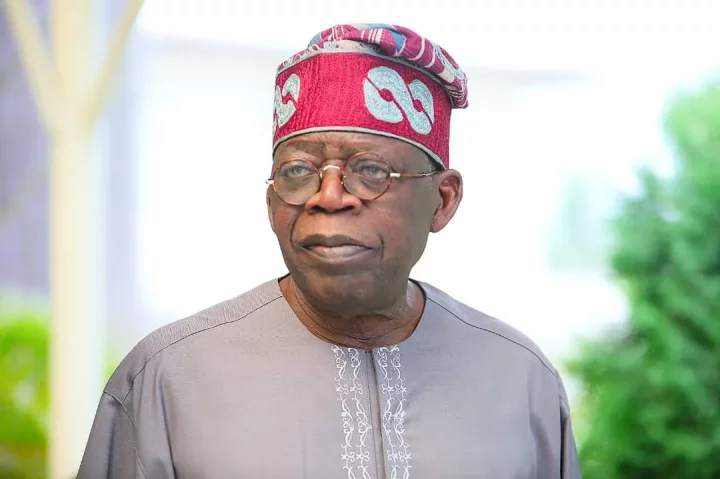
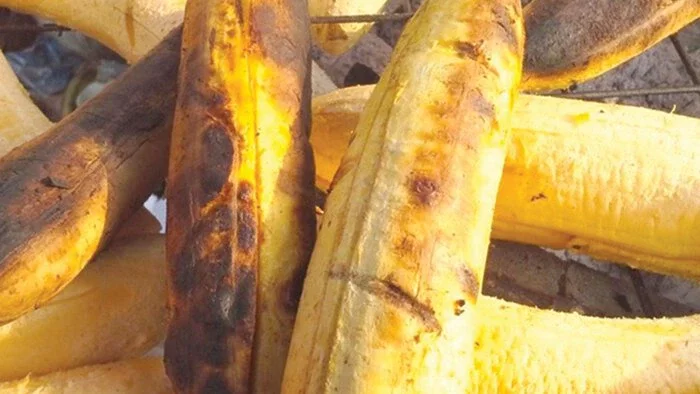
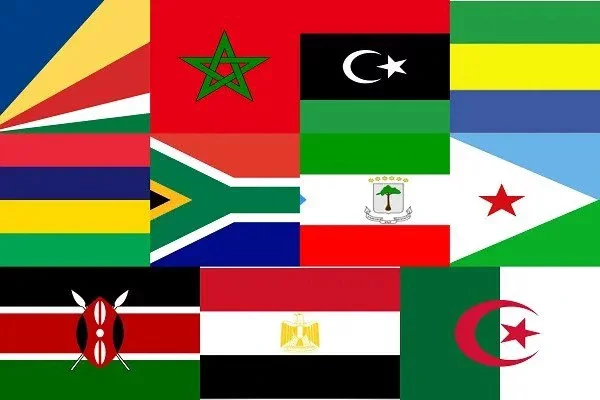
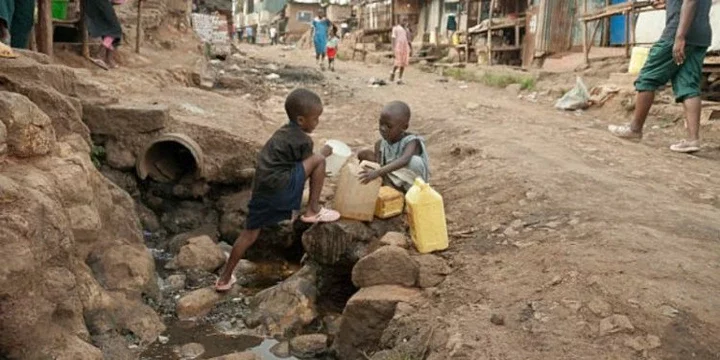
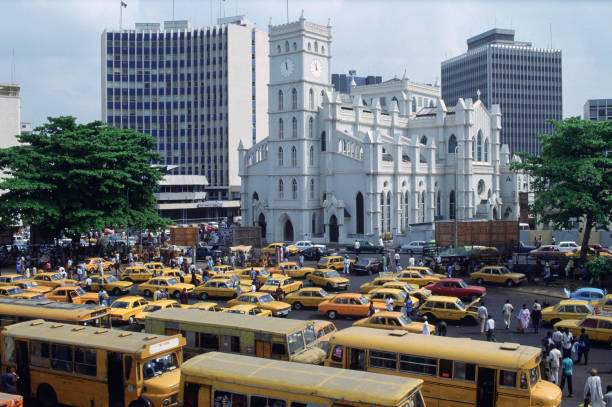
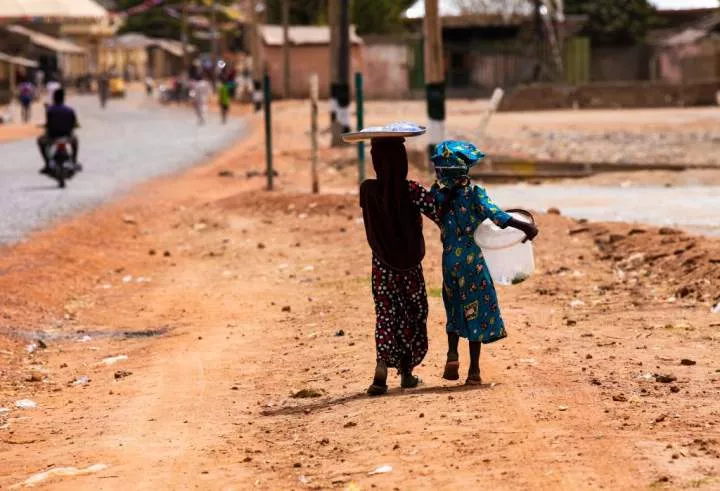








Comments